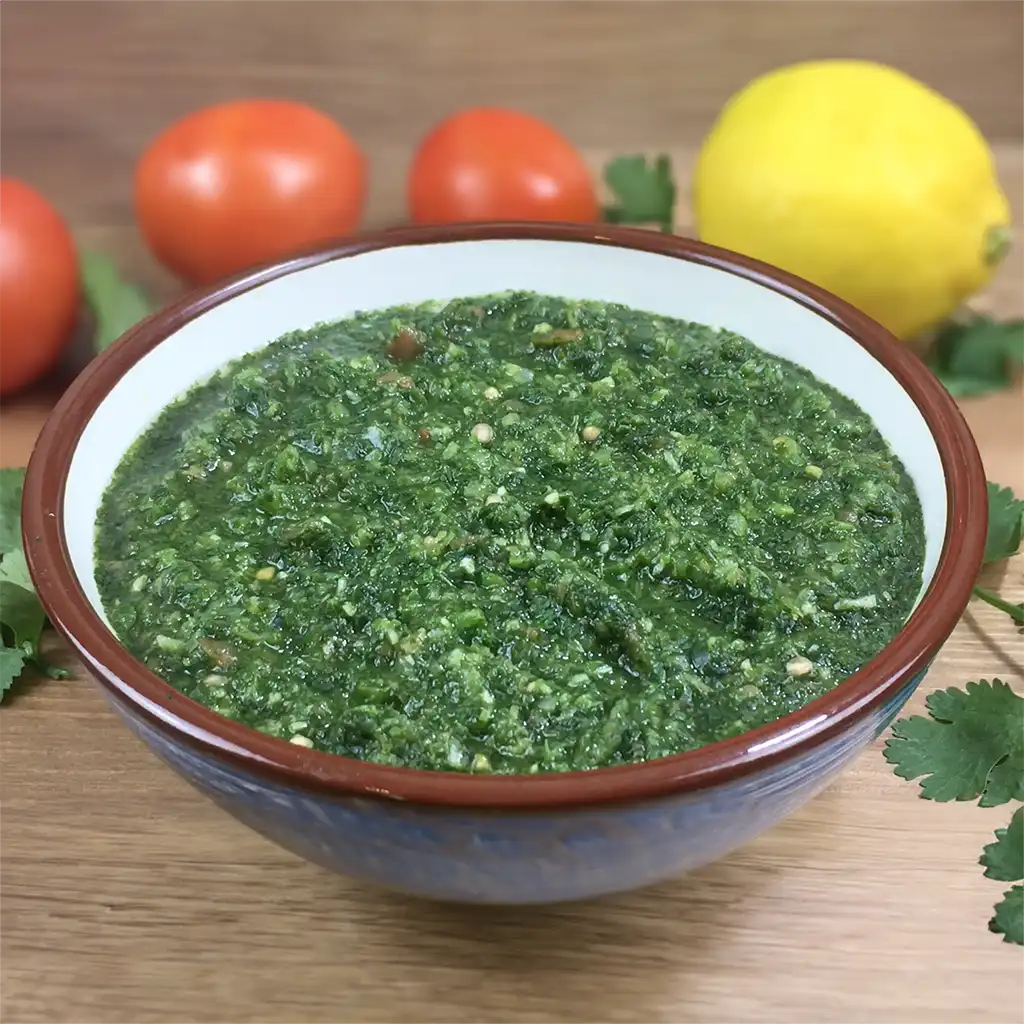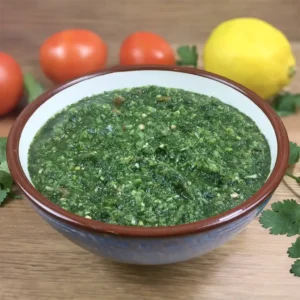
When it comes to adding a burst of flavor to your meals, there’s nothing quite like a vibrant green chutney. This zesty condiment, bursting with the freshness of coriander, mint, and a hint of garlic and spice, has been a staple in Indian cuisine for centuries.
Originating from the Indian subcontinent, green chutney adds a punch of flavor to various dishes, from snacks like samosas to main courses like biryanis.
Creating your own green chutney at home might sound daunting, but fear not! This recipe is simple enough for even the most novice of cooks to master.
With just a handful of ingredients and a trusty food processor, you’ll have a batch of flavorful green chutney ready to elevate your meals in no time.
Expert Tip: Experiment with adding other herbs and spices to customize the flavor of the chutney. Cilantro, ginger, cumin, or even a dash of sugar can add interesting twists to the recipe.
Coriander (Dhaniya): Coriander brings a fresh, citrusy flavor to the chutney, enhancing its overall freshness. Rich in antioxidants and vitamins, coriander not only adds flavor but also offers several health benefits.
Mint (Pudina): Mint adds a refreshing and cooling element to the chutney, balancing out the heat from the green chilies. It lends a pleasant aroma and a subtle hint of sweetness, making the chutney more vibrant and flavorful.
Green Chilies: Green chilies provide the chutney with its signature spicy kick. They add depth of flavor and heat, making the chutney irresistibly addictive for spice lovers. Adjust the quantity of chilies according to your preference for spice.
Garlic: Garlic adds a robust, savory flavor to the chutney, enhancing its overall complexity. It provides a depth of flavor and a hint of pungency, elevating the taste of the chutney to new heights.
Onion: Onion contributes a mild sweetness and a subtle sharpness to the chutney, complementing the other ingredients perfectly. It adds depth of flavor and a pleasant crunch, enhancing the overall texture of the chutney.
Tomatoes: Tomatoes lend a slight tanginess to the chutney, balancing out the flavors and adding a hint of sweetness. They also contribute moisture and body to the chutney, creating a smooth and velvety texture.
Lemon Juice: Lemon juice provides a bright, citrusy flavor to the chutney, enhancing its freshness and tanginess. It adds a zesty kick and helps to balance the flavors, making the chutney more vibrant and flavorful.
Salt: Salt acts as a flavor enhancer, bringing out the natural flavors of the other ingredients. It helps to balance the sweetness, acidity, and spiciness of the chutney, ensuring a well-rounded and harmonious taste.
Expert Tip: For a smoother consistency, you can strain the chutney through a fine mesh sieve after blending to remove any fibrous bits.
Expert Tip: Adjust the quantity of green chilies according to your preferred level of spiciness. Start with fewer chilies and add more gradually until you reach your desired heat level.
Yes, you can adjust the spiciness of the chutney by adding more or fewer green chilies according to your preference. If you prefer a milder chutney, you can remove the seeds from the chilies before adding them to the food processor.
The chutney can be stored in an airtight container in the refrigerator for up to one week. You can also freeze it in ice cube trays for longer storage. Simply thaw out the desired amount before serving.
Feel free to customize the recipe to suit your taste preferences. You can adjust the quantities of the ingredients or substitute them with similar alternatives. For example, you can use lemon zest instead of lemon juice for a slightly different flavor profile.
Here are some more recipes for you to enjoy! If you my recipes don’t forget to rate and leave a comment.
If you have any recipe suggestions, please do not hesitate to ask me. A great way to stay in contact with me is through Instagram, Facebook, Twitter and YouTube. Don’t forget to tag me @CookwithNabeela in your recipe photos!

Subscribe now to receive my latest recipes directly in your inbox. Stay up-to-date and never miss out!

I love to cook! I want to share with you my favourite, delicious family-friendly recipes. I want to inspire you to create fantastic food for your family every day.
Add your first comment to this post